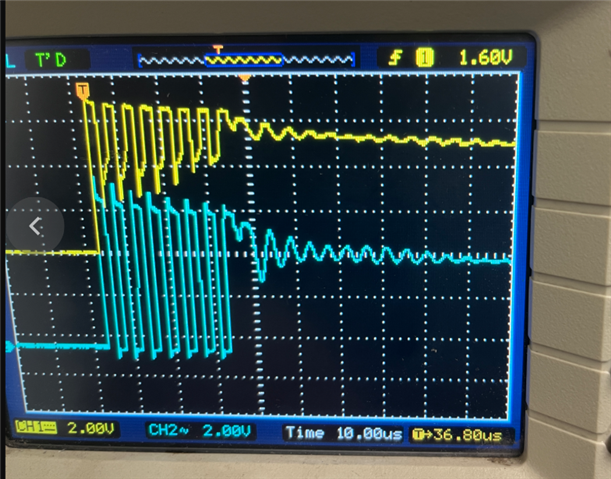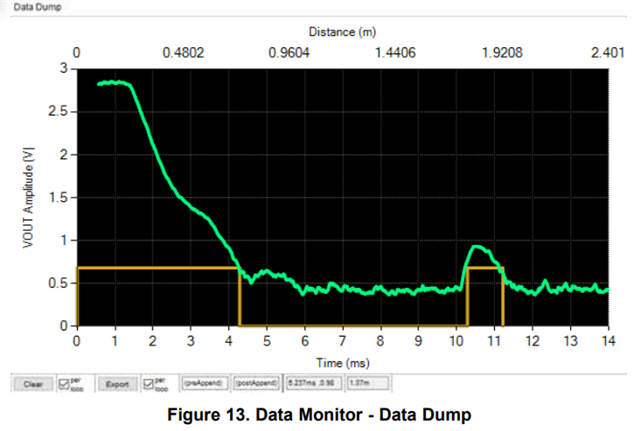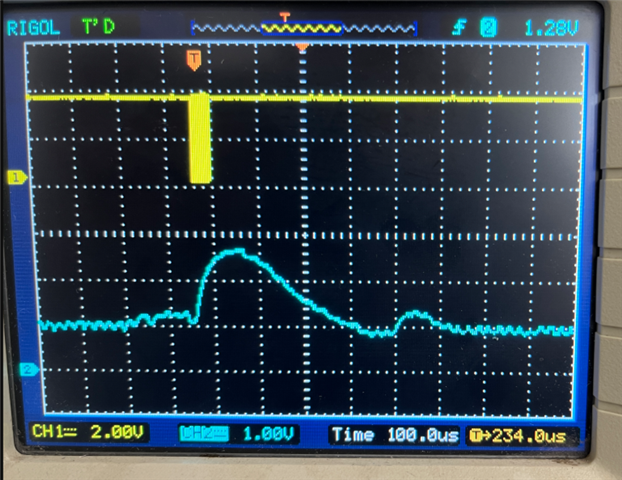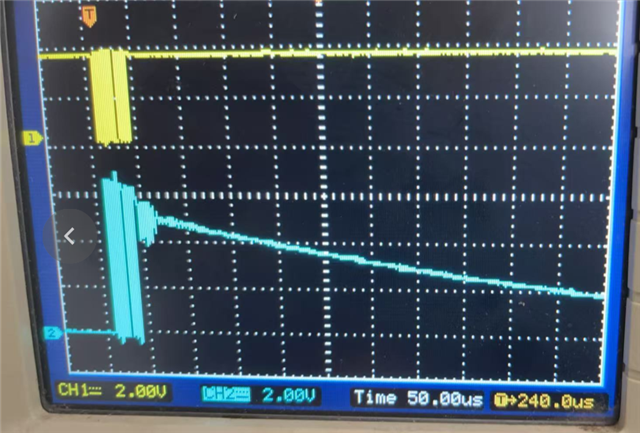Tool/software:
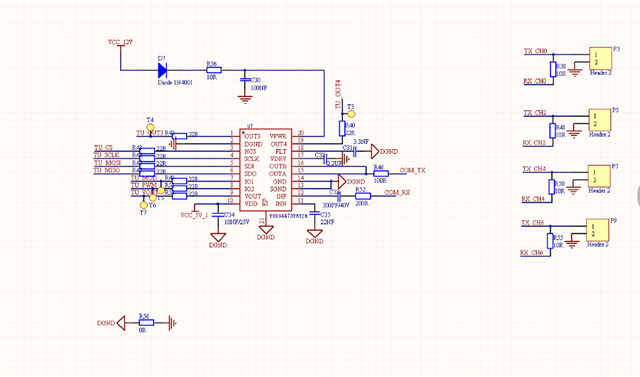
TUSS4470_Write_Register(&hspi1, GPIOA, GPIO_PIN_4, DEV_CTRL_3,0x00);
DEV_CTRL_3 ,0
MODE0
TUSS4470_Write_Register(&hspi1, GPIOA, GPIO_PIN_4, BURST_PULSE,0x88);
BURST_PULSE : HALF MODE =1 8 PULSE
TUSS4470_Write_Register(&hspi1, GPIOA, GPIO_PIN_4, TOF_CONFIG,0x01);
TOF 1
then Send pulses,no output
and another question:
That's what my schematic diagram is same. I need to configure it with a center frequency of 200Khz, bandpass, and the maximum receive gain, and then determine the corresponding registers
The following is the current configuration:
BPF_CONFIG_1 = 0X9E BPF_CONFIG_2 = 0x08 DEV_CTRL_1 = 0x00 DEV_CTRL_2 = 0x02
VDRV_CTRL = 0x18 ECHO_INT_CONFIG = 0x1A
ZC_CONFIG = 0x00


